
A document of description words that can be used to help build 4 point rubrics.
- Subject:
- 21st Century Competencies
- Elementary Education
- Material Type:
- Homework/Assignment
- Author:
- Arlene Low
- Date Added:
- 10/05/2021

A document of description words that can be used to help build 4 point rubrics.

Rubrics are included for English Language Arts courses at Sun West School Division in SK.
Over 30 amazing pieces are included.
This is a fabulous resource.
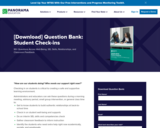
"How are our students doing? Who needs our support right now?"
This year, checking in on students frequently and consistently is even more critical to creating a safe and supportive learning environment.
Administrators and educators can these questions during a morning meeting, advisory period, small group intervention, or general class time to:
Check in on student well-being and supports
Do an interim SEL skills and competencies check
Gather classroom feedback to inform instruction
Identify the students who need extra help right now academically, socially, and emotionally
In This Guide, You'll Get Access to:
✔ Panorama's full check-ins question bank (includes 80+ free response and multiple choice questions for grades 3-12)
✔ Recommendations on who should use the questions, how often to send check-ins, and how to take action on the data
✔ An overview of Panorama's new student check-ins tool, which is a companion to annual SEL and school climate measurement "
You will need to provide your information to download the guide.
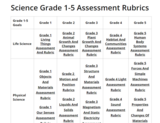
Science assessment rubrics for every grade from Grade 1-9, for each unit.
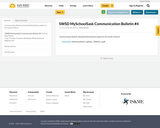
Communication Bulletin detailing MySchoolSask update for the month of March
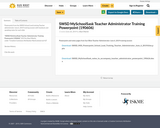
Powerpoint from the SWSD School Lead training Teacher administrator June 6, 2019 training session with handouts and speaking notes for each slide
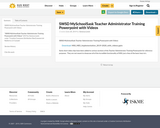
SWSD MySchoolSask Teacher Administrator Training Powerpoint with Videos

An editable rubric you can use to have students self-assess their grit.
You can edit it to match the age of the students.

A Provincial Resource for Teachers and Leaders of Mathematics in Saskatchewan.
CONTENTS
Establishing a Mathematically Rich and Safe Environment
This section contains the following subsections:
Learning and Classroom Environment
Nurturing Positive Relationships
Physical Environment
Fostering a Mathematically Rich Classroom
Math Tools and Resources
Math Manipulatives
Indigenous Ways of Knowing Connection to Establishing a Rich and Safe Environment
Supporting Families; and
Supporting Indigenous Families
Honouring Indigenous Ways of Knowing
Cultural Affirmation and School Climate
Shared Decision-Making
Curriculum Actualization
Lifelong Learning
Elder Protocol
Tobacco Offering
Theresa’s Story: Benefits of Interacting with Elders and Knowledge Keepers
Practising Holistic Assessment
This section contains the following subsections:
Assessment OF, AS, and FOR Learning
Using the Triangulation of Data
Spaced Practice
Education Sector Strategic Plan (ESSP) Math Data Collection
Math Screeners
Indigenous Ways of Knowing Connection to Practising Holistic Assessment
Culturally Valid Assessment
Responding with Effective Instructional Practices
This section contains the following subsections:
Curriculum Connections
Learning Stages and Scope Sequence
Instructional Approaches
Pedagogical Models in a Mathematics Context
Mathematicians Workshop
Vocabulary and the Language of Math
Differentiation and Responsive Pedagogy;
Intervention
Tiered Intervention in Math
The Role of Technology; and
Indigenous Ways of Knowing Connection to Responding with Effective Instructional Practices
Developing Number Sense
Instructional Approaches in Number Sense, (along with resources and support for elementary, middle and high school mathematics); including
Comparing
Composing and Decomposing
Estimating
Visualizing
Representing
Other Instructional Approaches
Indigenous Ways of Knowing Connection to Developing Number Sense.
Integrating Relevant Research
This section contains the following subsections:
Works Cited
Bibliography
Additional research for your consideration
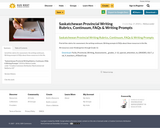
ind all the rubrics for assessment, the writing continuum, Writing prompts & FAQs about these resources in this file.
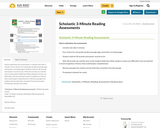
How to administer the assessments:
• Literally only takes 5 minutes
• Four choices for each grade (student passage page and teacher recording page)
• Student reads for 60 seconds and teacher records errors
• After 60 seconds you read the story to the student (while they follow along) to remove any difficulties s/he may had had in word recognition or fluency that could hamper comprehension
• Remove passage from student and ask what they remember from the passage
• Prompting is allowed, but noted
...

Supporting Assessment in Saskatchewan (2022) Resource Professional Development Jigsaw Activity (for Triads) This activity can be completed by your staff in August or during another PD Day throughout the year. The school's triad is encouraged facilitate the activity using the resources provided.
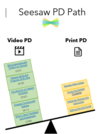
The document below is quick access to important PD links that will support you with your use of Seesaw as an assessment tool.
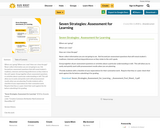
Where am I going?
Where am I now?
How can I close the gap?
Never collect information you are not going to use. Ask focused pre-assessment questions that will reveal student’s readiness, interests and learning preferences as they relate to the unit’s goals.
Group together all pre-assessment questions or activities about a particular understanding or skill. This will allow you to easily and quickly work with preassessment results when you are planning.
Provide students with a checklist of your expectations for their summative work. Require that they or a peer check their work against the list before submitting it for grading.
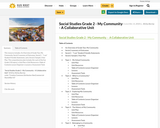
This resource includes:
An Overview of Grade Two: My Community, Social 2 summary of Outcomes, Social 2 – “I can” Student Friendly Statements, and a Social 2 Sample 2 Year Plan.
This comprehensive plan includes (for each of the five Grade 2 SS topics):
o Unit Plan
o Unit Resources
o Table of Contents Lesson Organizer
o Lessons
o Assessment Tools
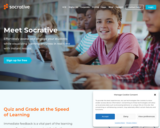
You will have to sign up to use this site. It is free.
"Create and grade at the speed of learning!"
"Watch the answers to every student’s quiz populate your screen in real time, or create exit tickets to gather feedback on today’s lesson. Socrative offers valuable insights and time-saving features so teachers can better assess the needs of their classrooms."
You can use up to 10 activities at once. You can create different options for your students to assess them in different ways all at the same time.
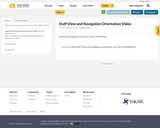
Staff View and Navigation Orientation to MSS - SWSD Training
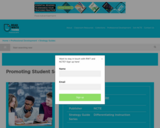
In this Strategy Guide, you'll learn about a number of specific methods that will promote self-assessment and contribute to a richer understanding of student learning.
Because of their diverse literacy needs, our students need us to differentiate the product, process and content of learning according to their learning style, interest and readiness. Yet, recognizing student growth and literacy needs requires more than one voice and more than one snapshot. Research has reminded us of the value of continued assessment and of students as partners in their own assessment. This heightened metacognition leads to increased engagement across content areas and remains a key characteristic of life-long learning. Motivation to learn increases when students are asked to critically analyze their own learning. And, if continued assessment informs instruction, students and teachers benefit from student feedback about what a student does and does not understand.

Students explore the physical and psychological effect of stress and tension on human beings. Concepts of stress and stress management are introduced. Students discover how perception serves to fuel a huge industry dedicated to minimizing risk and relieving stress. Students complete a writing activity focused on developing critical thinking skills. Note: The literacy activities for the Mechanics unit are based on physical themes that have broad application to our experience in the world concepts of rhythm, balance, spin, gravity, levity, inertia, momentum, friction, stress and tension.
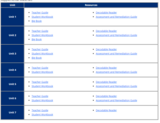
Materials include:
Teacher guides
Student workbooks
Decodable readers
Assessment and remediation guides
Videos
Flip books
Many other supports